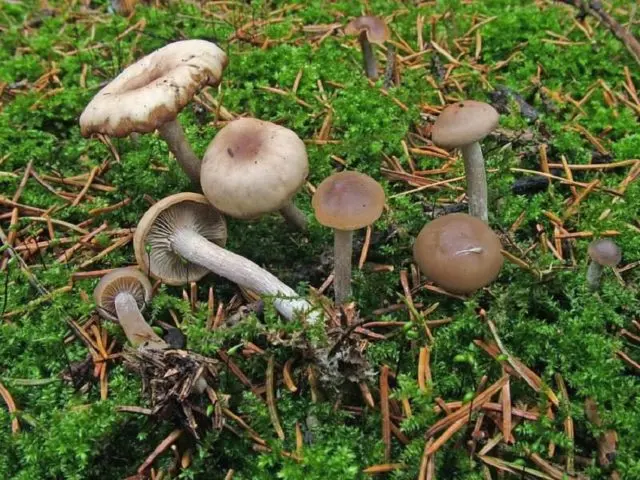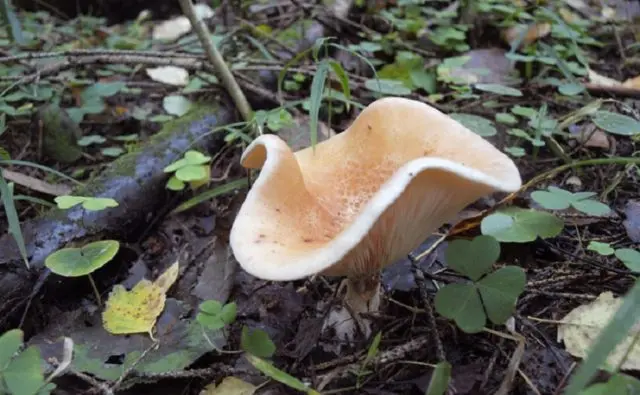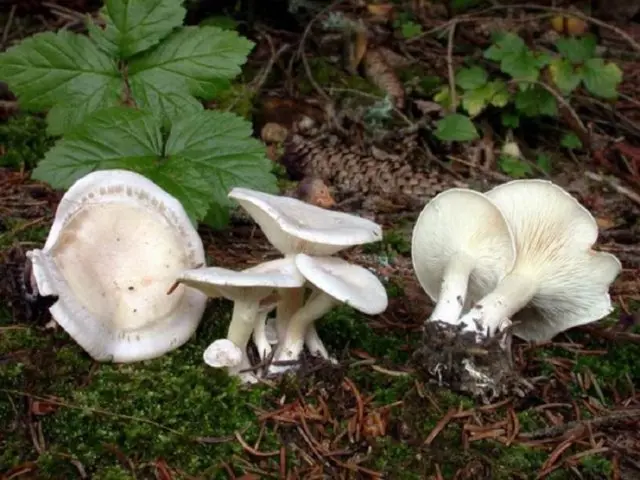Contents
The goblet talker is one of the varieties of the Shlyapkovy order of mushrooms, common in the territory of the Federation. Among the list of talkers there are edible species, as well as their inedible counterparts. The total number exceeds 250 items. In order to correctly determine the category of mushroom, you should carefully read the description and photo of each name of the talkers.
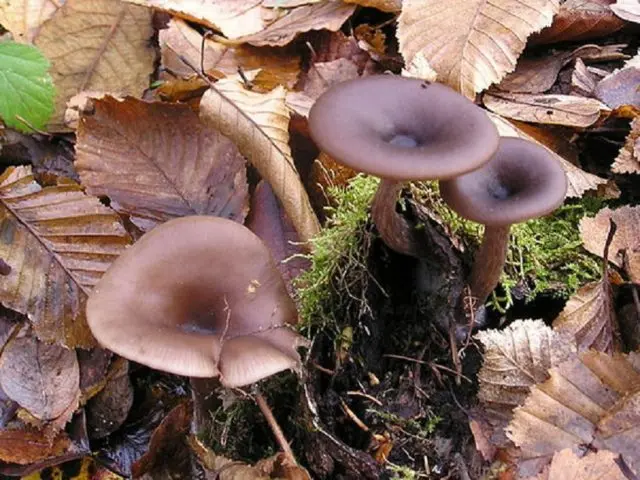
Where goblet talkers grow
The best place for the distribution of goblet talkers is coniferous or mixed forest. Among conifers, spruce and pine trees prefer fruiting bodies for settlement, and birches among deciduous trees. You can also find a goblet variety on the edges and meadows. The main regions of growth are the Caucasus, the European part of the Federation, the Far East, Western Siberia. Mushrooms grow on bedding or wood, especially rotting wood. Single specimens are rare, the species grows in groups. The first collection of fruiting bodies begins in July and continues until November. The peak of productivity is observed during August and September.
What do goblet talkers look like
It is important for mushroom pickers to know the description of the appearance of the goblet talker.
This type of mushroom has many varieties unsuitable for consumption. Therefore, you need to collect only edible.
The goblet talker has:
- Cup hat. Sometimes it resembles a deep funnel. The diameter of the cap is 4-8 cm. The edges of the cap are uneven, curved. The surface changes depending on the weather. When dry, the cap is silky; when wet, it takes on a grayish-brown color and swells with moisture. This quality is called hygrophobia.
- The plates are painted in a grayish color, they look much lighter than the hat. The plates descending along the stem are rare, grow together at the cap.
- A thin stem, with a diameter not exceeding 0,5-1,2 cm. Inside the stem of the fungus is hollow, with a pubescent base, at which it expands, and also has jumpers. The length ranges from 4 cm to 7 cm.
- The pulp of the fruiting body is brownish-gray or off-white, watery with a bitter almond flavor.
- Mature spores are white, powder-like. Dimensions – 7×4 microns.
It is best to remember the appearance of the goblet-shaped talker to help photos.
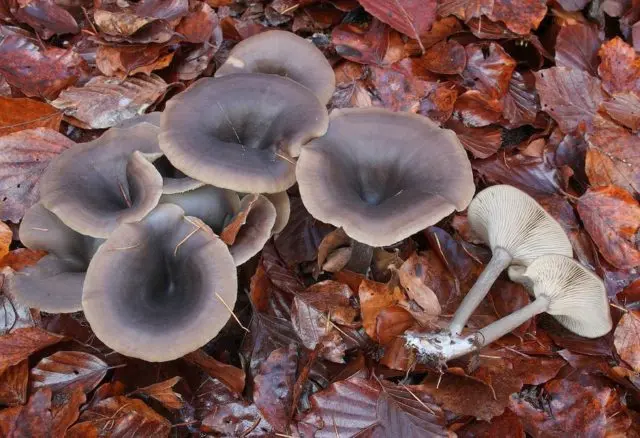
Is it possible to eat goblet talkers
The mushroom is considered conditionally edible, but it is consumed only after heat treatment. First, the harvested crop must be boiled for 20 minutes, and then cook culinary dishes. The young mushroom is used in all traditional dishes. It is pickled, salted, eaten boiled.
But mushrooms make excellent soups and sauces. Hats give dishes their delicate aroma.
Taste qualities of the goblet talker mushroom
The mushroom has a delicate taste and a slightly fruity smell. For dishes, they take the hats of a young goblet talker. Old specimens are already losing their aroma. The legs are not eaten, they are completely tasteless. You need to know that at the time of cooking, the mass of mushrooms is reduced by half.
Benefits and harm to the body
Mushrooms are beneficial to the human body. The goblet talker is no exception. The main advantage is the combination of vegetable and animal protein, amino acids, vitamins, fiber, minerals in one product. The use of a variety has a calming effect on the digestive tract, prevents oncological manifestations.
The low calorie content of mushrooms allows them to be included in the diet. Ready meals cleanse the body well, remove salts and toxins, and normalize cholesterol levels. According to their composition, mushrooms replace animal protein, therefore they are considered an indispensable dish in the diet of vegetarians.
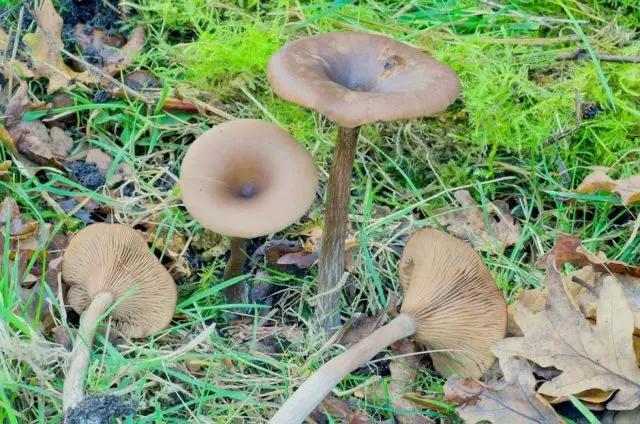
In addition to nutritional benefits, goblet has medicinal properties. The mushroom is used in traditional medicine recipes as a constituent element of ointments, extracts, decoctions. Compositions are used to treat wounds, respiratory diseases and urolithiasis.
Edible talker is harmless. The only contraindication for use is allergic manifestations to the fungus. You should also be careful not to give goblet dishes to the elderly or children. After all, mushrooms very strongly absorb harmful substances that are in the environment.
False doubles
It is very difficult to distinguish edible varieties from inedible ones without experience. Many poisonous representatives have practically no visual differences. Experienced mushroom pickers advise paying attention to color and smell.
Poisonous specimens usually:
- plates and spores are pink;
- there is a pleasant and powdery smell;
- no circles on the hat.
However, such signs cannot help to completely separate edible species from poisonous ones.
The main types of talkers to avoid:
- pale colored. This mushroom is inedible. The young representatives have a flat hat, but the old ones already have a modified hat – funnel-shaped with curved edges. The pulp is gray watery consistency. Leg pubescent, widened at the base. It has no smell, if the mushroom is dried, it begins to emit the smell of rot. It grows in birch or oak groves, as well as mixed forests. Another difference by which a pale-colored talker can be identified is a single location. The species does not grow in groups.

- Inverted. This variety has a cap with a diameter of 4 cm to 8 cm. When the mushroom grows, it becomes funnel-shaped and wide. At first, the hat is yellow-red-brown or brick, then fades. The plates are pale yellow, running down to the stem. The leg is thin, curved, rigid. The pulp has a sour smell. Grows in groups on litter or coniferous litter. The peak of growth falls on August-October. More clearly about the inverted talker:

- Wax. The mushroom has other names – leafy, grayish. The color of the cap is white or slightly grayish. The diameter of an adult mushroom is up to 8 cm. The cap is bell-shaped in young people, funnel-shaped in old ones with a fringe along the edges. Legs with a thickening downwards, the shape resembles a cylinder. Height up to 5 cm, diameter up to 1 cm. The poisonous mushroom has a pleasant aroma and good taste, which requires special care of mushroom pickers.

Collection rules
The basic rule of collection is experience. The talker cannot be attributed to popular mushrooms. This group has many doubles that are dangerous to consume. It is also difficult to distinguish species in the forest, most often the differences are already visible at home. Therefore, beginners should not independently assemble a goblet talker without an experienced mushroom picker.
Use
You can add fried, boiled, pickled, dried talkers to dishes. They give a pleasant aroma and a slightly bitter taste due to the presence of a specific enzyme.
Conclusion
The goblet talker is a very tasty tender mushroom. Knowledge and attentiveness will allow you to harvest a good harvest, and then cook fragrant nutritious dishes even for novice lovers.










